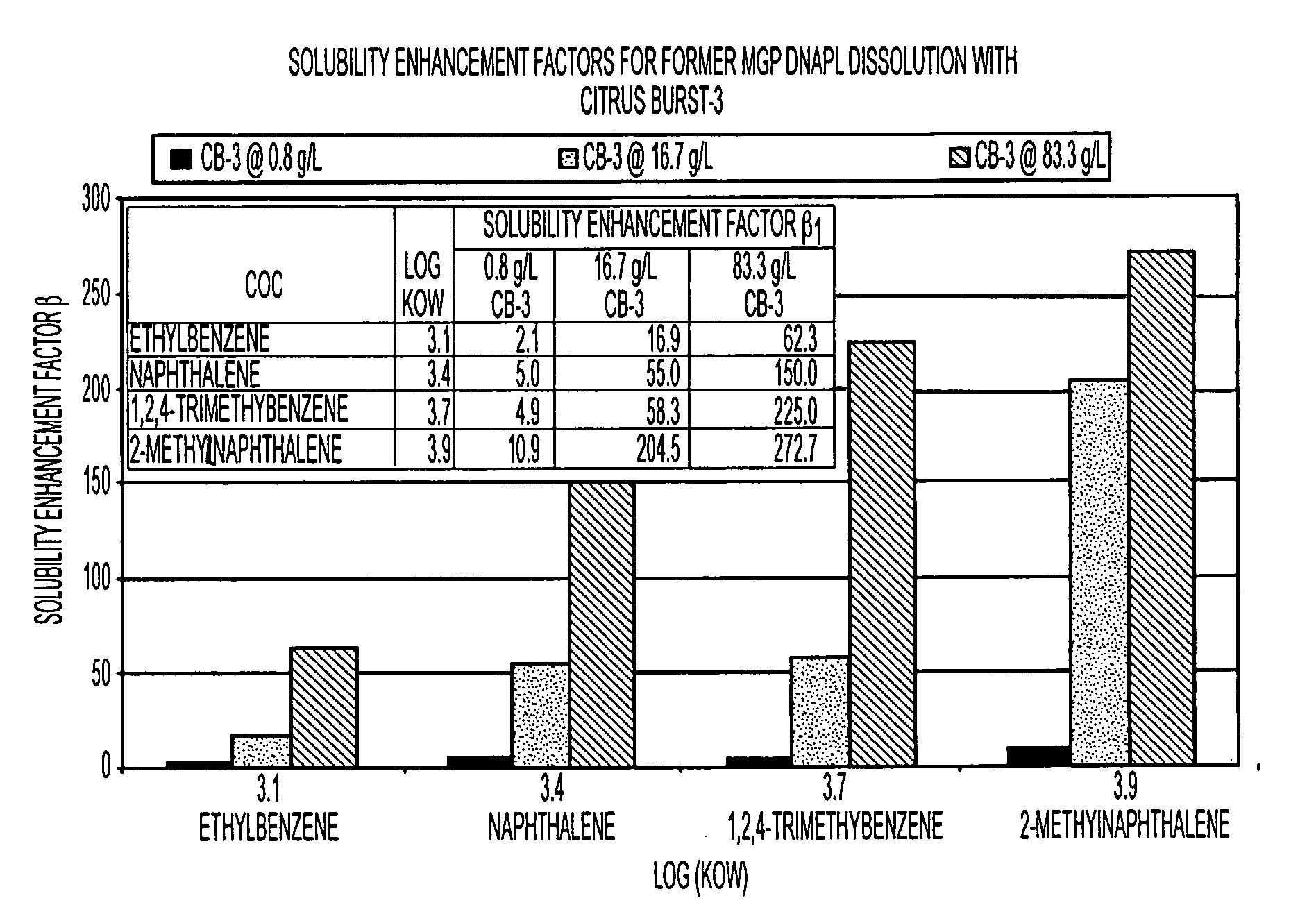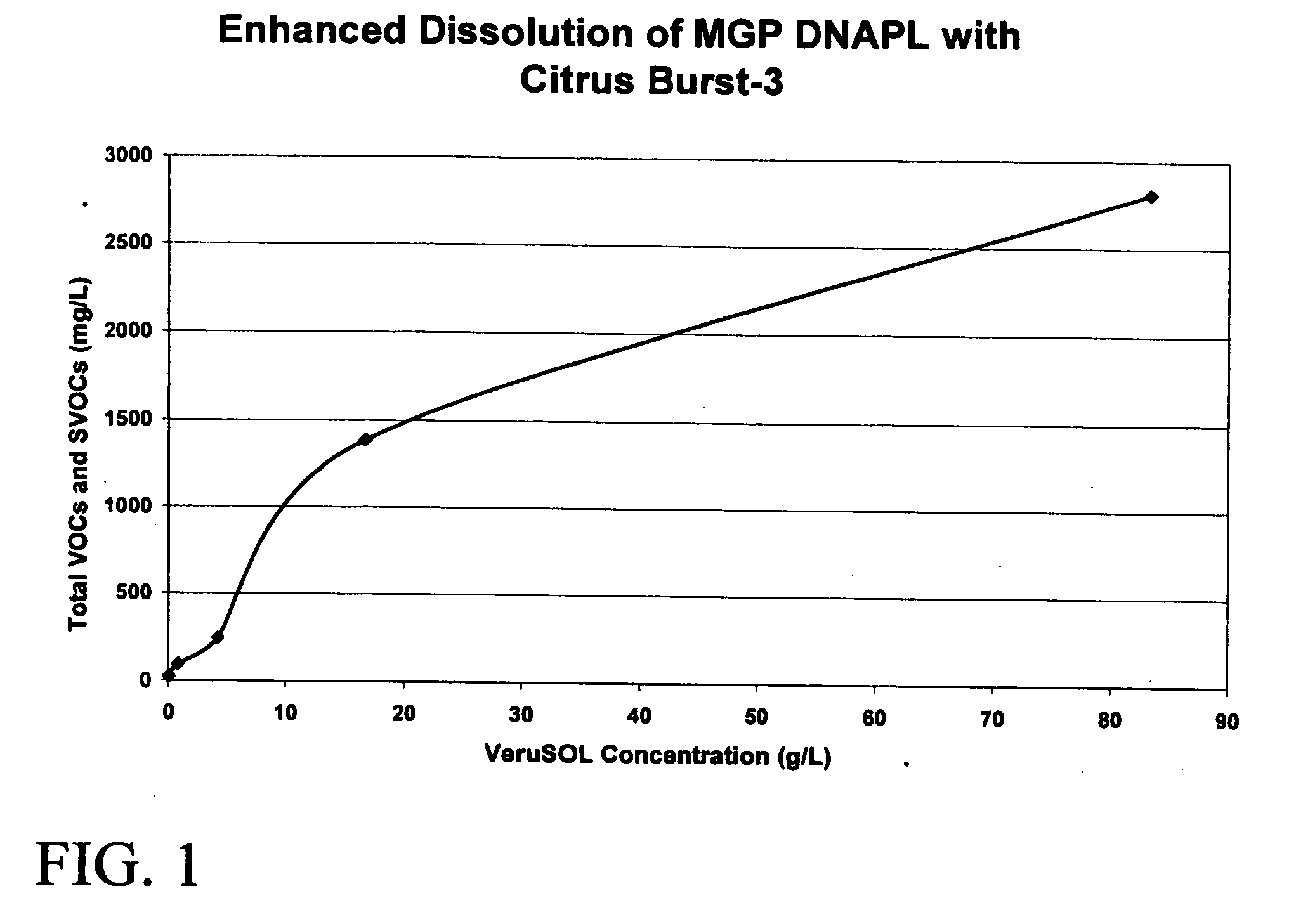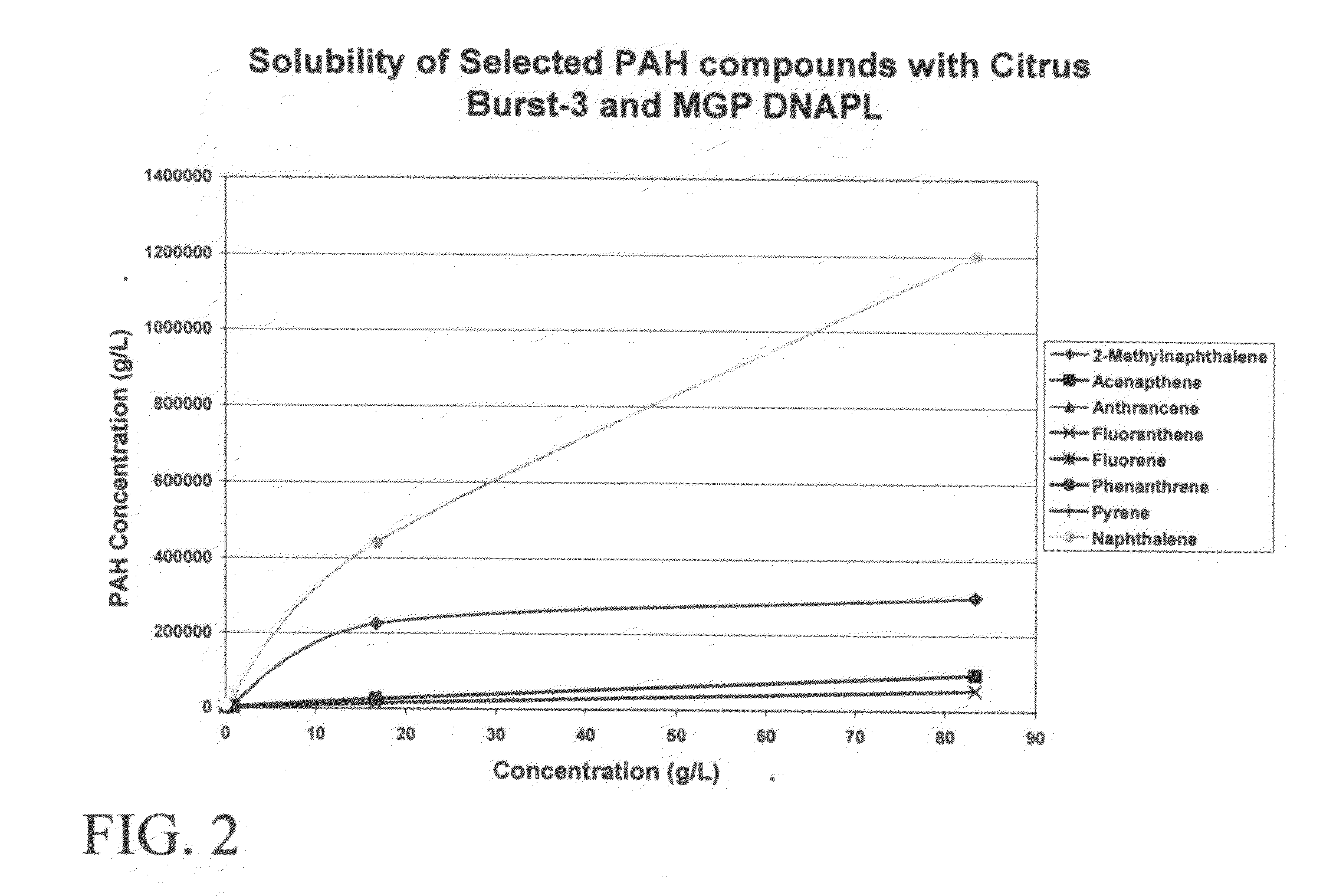[0012]This application presents embodiments of an invention which include fast and efficient methods and compositions for treating contaminated soil and
groundwater in situ to reduce the amount of contaminant, for example, an organic chemical and / or a NAPL. The embodiments include methods and compositions for selectively treating target contaminants. For example, a method is presented in which a surfactant or surfactant-cosolvent mixture and an oxidant are introduced into the subsurface containing the soil, groundwater, and a NAPL and the surfactant or surfactant-cosolvent mixture solubilizes the contaminant, so that the overall rate of oxidation of the contaminant is greater than or equal to the overall rate of solubilization of the contaminant.
[0013]This application also presents the use of subsurface injected solutions with variable densities to control and optimize contact of the injected solutions with the targeted treatment zones. By more precisely controlling the subsurface strata contacted by the injected solutions, remediation processes can be employed to be more rapidly effective and reduce the quantity of injected liquids and chemicals required to effect treatment.
[0014]A method for reducing the concentration of a contaminant in a soil according to the invention includes introducing an oxidant and a surfactant into a subsurface containing the soil, allowing the surfactant to solubilize or desorb the contaminant, and allowing the oxidant to oxidize the solubilized contaminant in the subsurface, so that the amount of the contaminant in the soil is substantially reduced. The overall rate of oxidization of the contaminant is controlled to a predetermined value and the overall rate of solubilization of the contaminant is controlled to a predetermined value by selecting the oxidant, surfactant, and
antioxidant and adjusting the concentrations of surfactants, oxidants, and antioxidants. Thus, as the user of the method chooses, the rate of oxidation of the contaminant is greater than, less than, or equal to the rate of solubilization of the contaminant.
[0017]A method for reducing the concentration of a contaminant in soil according to the invention includes solubilizing the contaminant and oxidizing the contaminant. Mobilization of the contaminant during solubilization and oxidation is minimal.
[0021]A method for reducing the concentration of a contaminant in a soil at a target depth according to the invention can include the following: identifying a target depth range for reducing the concentration of the contaminant; selecting a surfactant, an oxidant, and optionally a non-oxidant, non-activator salt; introducing the surfactant, the oxidant, and optionally the non-oxidant, non-activator salt into a subsurface containing the soil; allowing the surfactant to solubilize or desorb the contaminant; and allowing the oxidant to oxidize the contaminant in the subsurface, so that the concentration of the contaminant in the soil is substantially reduced. The surfactant and the oxidant are introduced together and the oxidant is selected so that the combination of the surfactant and the oxidant has a density to maximize the fraction of the surfactant and oxidant mixture that remains within the target depth range. Alternatively, the non-oxidant, non-activator salt is introduced together with the surfactant, the oxidant, or both, and the non-oxidant, non-activator salt is selected so that the mixture of the non-oxidant, non-activator salt with the surfactant, the oxidant, or both has a density to maximize the fraction of the surfactant and maximize the fraction of the oxidant that remains within the target depth range.
[0024]A method for reducing the concentration of a contaminant in a soil, according to the invention, includes introducing an oxidant and a surfactant into a ground surface or above-ground formation, structure, or container containing the soil. The surfactant is allowed to solubilize or desorb the contaminant, and the oxidant is allowed to oxidize the solubilized contaminant, so that the amount of the contaminant in the soil is substantially reduced. The overall rate of oxidization of the contaminant is controlled to a value predetermined by the user of the method. The overall rate of solubilization of the contaminant is controlled to a value predetermined by the user of the method. The overall rate of oxidation and the overall rate of solubilization are controlled by selecting the oxidant, surfactant, and
antioxidant and adjusting the concentrations of surfactants, oxidants, and antioxidants. Thus, the user can choose in advance the rate of oxidation of the contaminant to be greater than, less than, or equal to the rate of solubilization of the contaminant.
 Login to View More
Login to View More  Login to View More
Login to View More 


